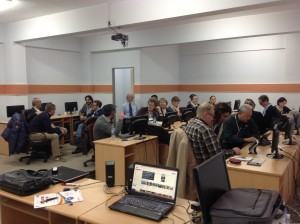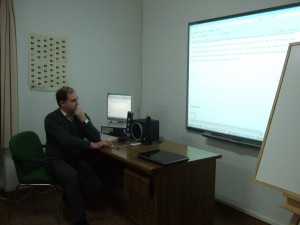 We all evaluated the courses in which we experimented with the PLE methodology. Check out the links at the bottom of this page to see the conclusions from each individual course. We also had a great discussion at the final meeting and came up with the following synthesis:
We all evaluated the courses in which we experimented with the PLE methodology. Check out the links at the bottom of this page to see the conclusions from each individual course. We also had a great discussion at the final meeting and came up with the following synthesis:
Synthesis and conclusions
- Motivation is key. Both teachers and learners must be motivated to work with PLEs. If the teachers and/or learners do not see the point, there can be no learning. Participants need to have open minds and be ready to tolerate a certain amount of uncertainty. However, one or two really motivated people may be enough to show what the point is!
- Pedagogy vs technology? Some of us concentrated on pedagogy while others focused more on technology. The final results show that in order to build a successful course there needs to be a strong focus on PLE methodology (pedagogical) and less on technology. Technology is there to help us realize our pedagogical goals!
- Where is the “personal”? There was a lot of variation as to how “personal” the learning environments were. Some partners let learners have the choice in both building learning contents and building learning environments, some partners offered ready-made platforms for independent study.
- Who’s in charge? There was variation regarding the teacher’s role in the classroom. All partners struggled to find a balance between learner autonomy and directed instruction. Who selects the technology to be used? Who decides on learning content? Who determines learning objectives?
Course summaries and evaluations:
- Valkeakoski-opisto, Finland

- Instituto Politécnico de Leiria, Portugal
- Centro de Educación Permanente “Miguel Hernández”, Spain
- Porsgrunn Voksenopplæringssenter, Norway
- Afyonkarahisar Halk Eğitim Merkezi ve Akşam Sanat Okul, Turkey
- Instytut Rozwoju Zasobow Ludzkich, Lublin, Poland
- Confartigianato Formazione C.N.I.P.A. Umbria, Italy